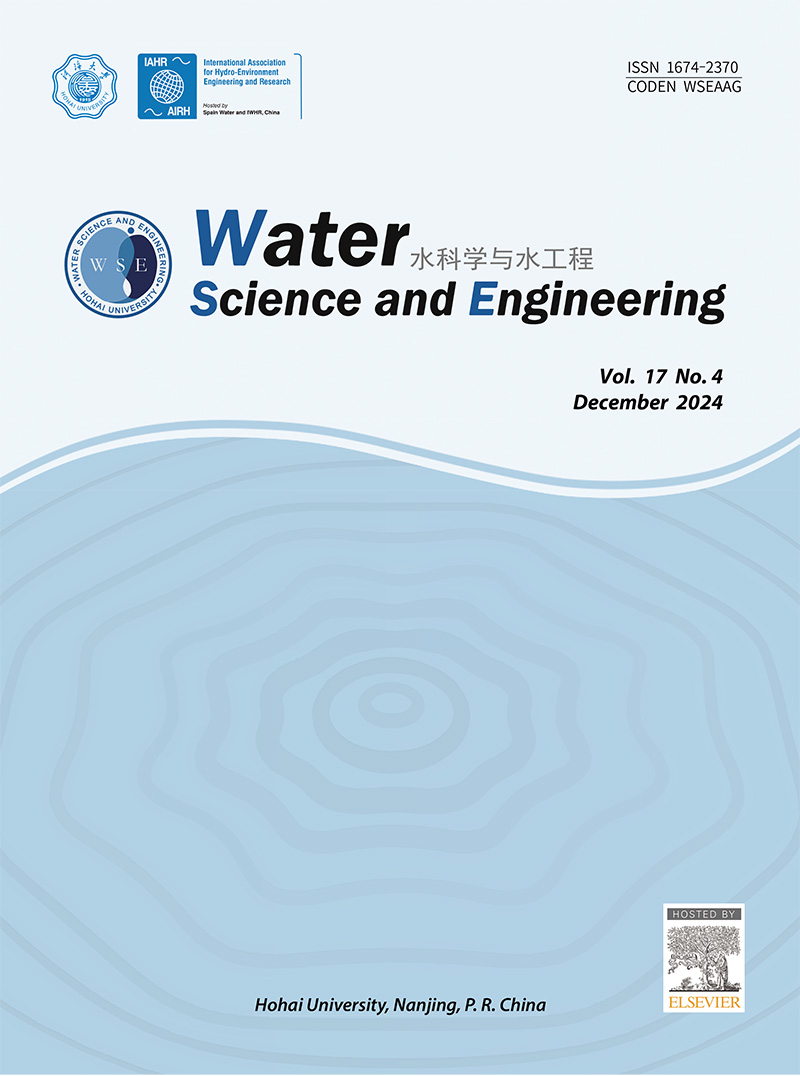Effective removal of fluoride and arsenic from groundwater via integrated biosorption and membrane ultrafiltration
IF 4.3
Q1 WATER RESOURCES
引用次数: 0
Abstract
Fluoride (F−) and arsenic, present as As(III) and As(V), are widespread toxins in groundwater across India, as well as in other countries or regions like Pakistan, China, Kenya, Africa, Thailand, and Latin America. Their presence in water resources poses significant environmental and health risks, including fluorosis and arsenicosis. To address this issue, this study developed an integrated process combining biosorbents and ultrafiltration (UF) for the removal of F−, As, and turbidity from contaminated water. Laboratory-scale adsorption experiments were conducted using low-cost biosorbents with different biosorbent dosages, specifically Moringa oleifera seed powder (MSP) and sorghum bicolor husk (SBH), along with sand as a binding medium. F− and As concentrations ranging from 2 to 10 mg/L and 3 to 12 mg/L, respectively, were investigated. Biosorbents and their different combinations were tested to determine their efficacy in removing dissolved F− and As. The results showed that a blend of 10-g/L MSP with SBH achieved the highest F− (97.20%) and As (78.63%) removal efficiencies. Subsequent treatment with a UF membrane effectively reduced turbidity and colloidal impurities in the treated water, achieving a maximum turbidity removal efficiency of 95.40%. Equilibrium kinetic and isotherm models were employed to analyze the experimental data, demonstrating good fit. Preliminary cost analysis indicated that the hybrid technology is economically viable and suitable for the separation of hazardous contaminants from aqueous solutions. This study underscores the potential of inexpensive biosorption technologies in providing clean and safe drinking water, particularly in industrial, rural, and urban areas.
通过综合生物吸附和膜超滤有效去除地下水中的氟和砷
氟化物(F−)和砷,以as (III)和as (V)的形式存在,是印度以及巴基斯坦、中国、肯尼亚、非洲、泰国和拉丁美洲等其他国家或地区地下水中广泛存在的毒素。它们在水资源中的存在构成了重大的环境和健康风险,包括氟中毒和砷中毒。为了解决这一问题,本研究开发了一种结合生物吸附剂和超滤(UF)的综合工艺,用于去除污染水中的F−,As和浊度。以Moringa oleifera种子粉(MSP)和高粱双色壳(SBH)为研究对象,以沙子为吸附介质,采用低成本、不同用量的生物吸附剂进行了实验室规模的吸附实验。F−和As浓度分别为2 ~ 10mg /L和3 ~ 12mg /L。对生物吸附剂及其不同组合进行了测试,以确定其去除溶解的F−和As的功效。结果表明,10 g/L MSP与SBH的混合去除率最高,分别为97.20%和78.63%。后续超滤膜处理有效降低了处理水中的浊度和胶体杂质,最大浊度去除率达95.40%。采用平衡动力学模型和等温线模型对实验数据进行了分析,结果表明拟合良好。初步的成本分析表明,混合技术在经济上是可行的,适用于从水溶液中分离有害污染物。这项研究强调了廉价生物吸附技术在提供清洁和安全饮用水方面的潜力,特别是在工业、农村和城市地区。
本文章由计算机程序翻译,如有差异,请以英文原文为准。
求助全文
约1分钟内获得全文
求助全文
来源期刊

Water science and engineering
WATER RESOURCES-
CiteScore
6.60
自引率
5.00%
发文量
573
审稿时长
50 weeks
期刊介绍:
Water Science and Engineering journal is an international, peer-reviewed research publication covering new concepts, theories, methods, and techniques related to water issues. The journal aims to publish research that helps advance the theoretical and practical understanding of water resources, aquatic environment, aquatic ecology, and water engineering, with emphases placed on the innovation and applicability of science and technology in large-scale hydropower project construction, large river and lake regulation, inter-basin water transfer, hydroelectric energy development, ecological restoration, the development of new materials, and sustainable utilization of water resources.
 求助内容:
求助内容: 应助结果提醒方式:
应助结果提醒方式:


